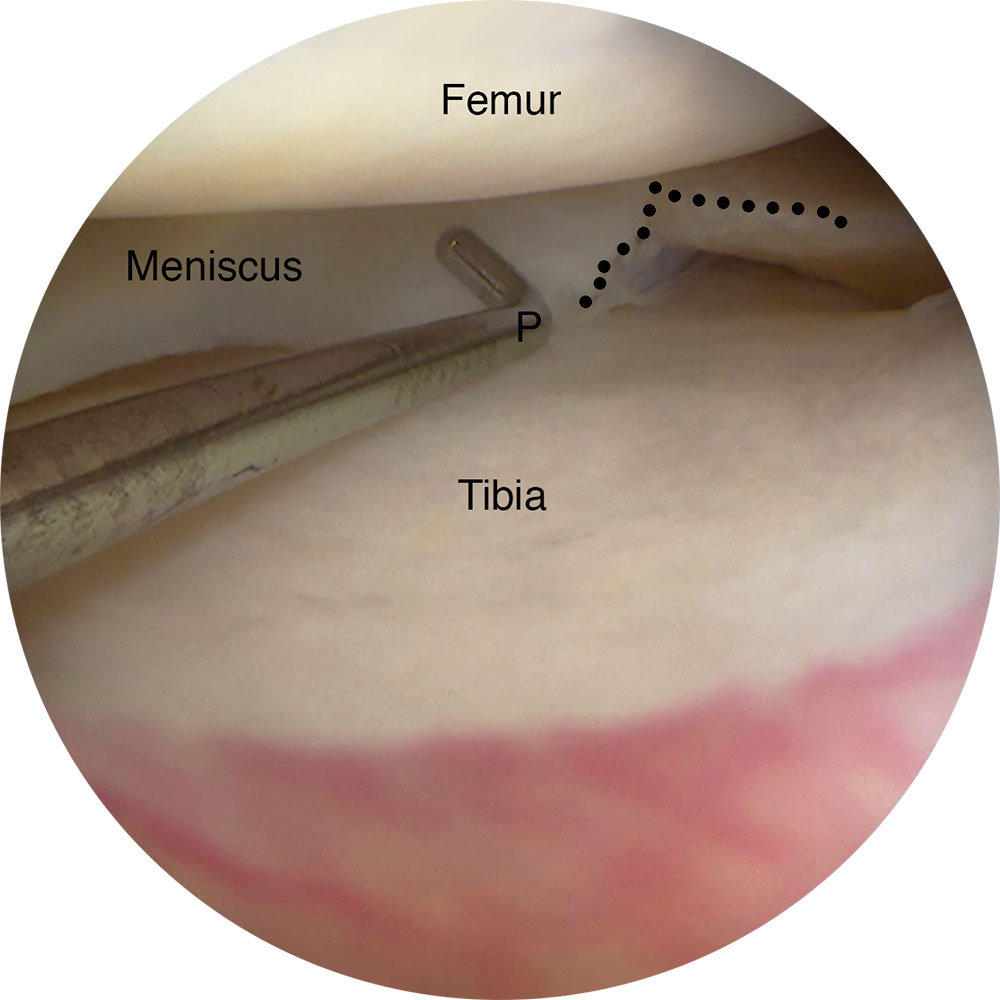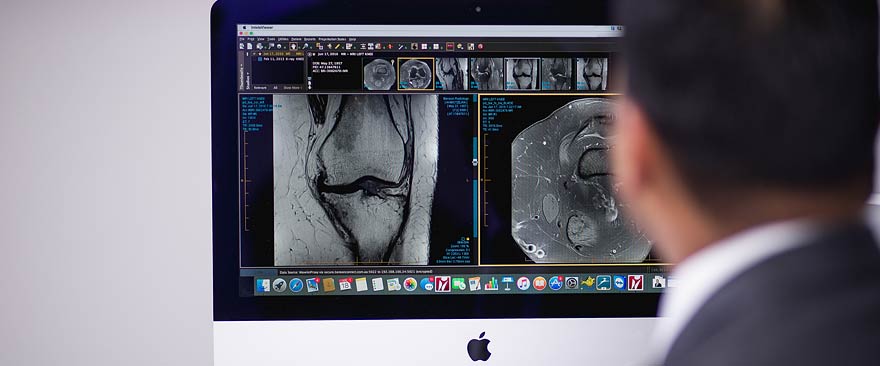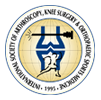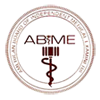Meniscal Injuries
The meniscus, which in ancient Greek (meniskos) literally means a 'crescent', is the medical name for any crescent-shaped cartilage tissue that sits in a joint between two bones. The function of the meniscus cartilage in the knee is to act as a shock absorber when walking, running and jumping and also stabilise the knee joint.
Damage to the meniscus can occur as a result of injury (often a contact sports related injury or a fall), or over longer periods of time as a result of normal degeneration due to ageing or due to the presence of arthritis in the knees.
Apart from knee pain and difficulty walking, damage to the meniscus generally results in swelling to the knee as well as locking or clicking of the joint.
Damage to the meniscus will not show up on an X-ray. An MRI scan is sometimes required to confirm the diagnosis, although in many cases a diagnosis can be made by from an examination and knowledge of precisely how the injury was caused.

Arthroscopic view of knee with radial meniscal tear.

Arthroscopic view of knee with bucket handle tear of meniscus locked in the notch.
Surgery
Meniscal tears often do not heal naturally. The extent and location of the tear will determine which procedure is likely to be more effective.
The meniscus has three zones:
- Outermost Red-Red zone (vascular zone; tears here are likely to heal well with repair).
- Middle Red-White zone (less vascular area; tears may heal in young individuals).
- Inner White-White zone (avascular area, tears unlikely to heal even with repair).
Generally, if the tear is relatively small, a small section of the meniscus can be surgically removed (referred to as 'partial meniscectomy'). With larger tears to the meniscus, especially in the Red-Red zone surgery may involve repairing the tear itself with special suture-anchors.
Excision of the meniscal tissue has been proven to be associated with a much higher incidence of degenerative changes/osteoarthritis over the next 10-20 years. Hence there is increasing emphasis from surgeons to preserve as much meniscal tissue as possible.
Most meniscal surgery is conducted using arthroscopic techniques (keyhole surgery) where two small (about 1cm) incisions are made on either side of the patellar tendon. Meniscal tears associated with ACL (Anterior cruciate ligament) tears are often repaired at the time of ligament reconstruction as they have a very high incidence of healing.
Rehabilitation and Post Operative Care
If the procedure involved removing a section of the meniscus, recovery time is generally 3-6 weeks and it is possible to walk with crutches straight after surgery. However, if the surgery was to repair the meniscus, recovery time is longer (generally 4-8 weeks) and there is a short period of time after the surgery during which no load bearing is permitted (i.e. walking non-weight-bearing with crutches).
Low impact activities (e.g. general walking and office work) can be undertaken within a week of surgery, however higher impact activities, such as heavy physical work or playing sports will require a longer recovery period of around 2-6 weeks. Dr Reddy will give you more precise guidelines. Full recovery from a meniscal repair procedure can take up to 3 months.
Meniscal Repair – Things you need to know
- Recovery from arthroscopic knee surgery is much quicker than from conventional open surgery on the knee. Patients are monitored for up to two hours in the recovery room and if all is well are allowed to return home afterwards, with a crutch.
- It is recommended that you do not drive immediately after surgery. Please have a friend or relative pick you up.
- Dr Reddy will see you on the morning after surgery if an overnight stay is required – commonly after ligament reconstruction procedures. He and the Physiotherapist will guide you regarding the exercise regimen.
- Patients can walk full weight bearing after a partial meniscectomy. But meniscal repair would require you to be toe-touch weight bearing only for 4 weeks.
- Total healing time is 12-16 weeks following a meniscal repair and 3-6 weeks following a partial meniscectomy. Following a partial meniscectomy, you would be able to walk full weight bearing on the same day as surgery and return to sedentary work as early as 5-7 days; but heavy manual work may need 2-3 weeks. Twisting and pivoting is prohibited for 6-8 weeks.
- It is normal for the area around the knee to have some swelling and pain for 2-3 weeks. Pain medication will be prescribed. Keeping the leg elevated and using ice packs placed on the knee will help reduce swelling.
Risks of surgery
As with any surgery, arthroscopic knee surgery carries the possibility of complications such as infection and bleeding or possible damage to nerves or blood vessels, numbing and loss of feeling at the sites of the incisions and potential ongoing pain in the knee and calf due to CRPS (Complex regional pain syndrome). Most of these complications are very unusual and knee arthroscopy is overall a safe procedure. When performed for correct indications, the benefits far outweigh the risks.
Failure of meniscal repair is a known complication and may cause pain and clicking. This would require a repeat arthroscopy and partial meniscectomy.
Rehabilitation guidelines following Meniscal Repair
First 2 weeks
- Straight leg raise, Quadriceps and gluteal sets, Range of movement exercises of knee sitting on a chair.
- Core strengthening and upper body exercises.
- No resistance exercises.
- No pivoting, twisting, cutting movements.
- Touch weightbearing onloy with crutches.
2-4 weeks
- Continue with quadriceps and ROM exercises.
- Start proprioception exercises.
- Progress with core strengthening.
- Touch weightbearing only with crutches.
After 4 weeks
- Proceed to full weight bearing.
- Progress with ROM, proprioception and core strengthening.
- Start resistance exercises only after 6 weeks – Closed chain exercises only till 12 weeks.
- Start slow walking on treadmill and incorporate functional exercises.
- Running after 12 weeks only based on functional and activity / sports based testing.







